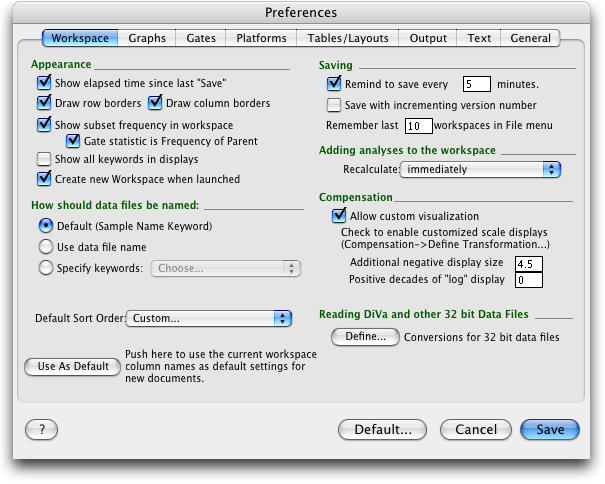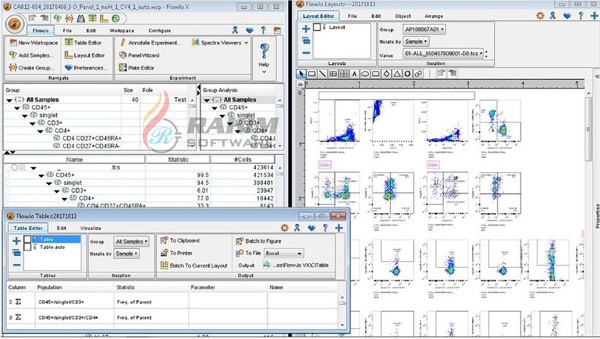
When adding, make sure to be consistent with naming conventions, an extra space, a missed capital letter can change the meeting of the keyword. The more you can add during acquisition, the better. Keywords offer a lot of power for sorting and finding data when used properly. Say you have keywords for time of treatment (0 hr, 4 hr, 20 hr), type of treatment (no stim, stim 1, stim 2) and sample (PBMC, BM), you can perform complex sorting to arrange the data in a manner that makes analysis easier. Since the data can be sorted using the keyword, this allows for complex sorting/organizing of the data. In Figure 5, the data was sorted by concentration either low to high, or high to low, and the data concatenated.įigure 5: Sorting data before concatenation. One common thing done with titration data is the generation of a concatenated file of the all the data so that it can be displayed on a single bivariate plot. The results of adding the concentration values as a new keyword is shown in figure 4.įigure 4: Concentration added using the keyword.
#Flowjo 10 vs flowjo 9 series
Keywords can also be added of the Workspace ribbon, which also allows you to create a series of keyword values, making labeling of the keyword easier. After selecting ‘OK, the keyword is added and will appear in the sample workspace where you can fill in the appropriate keyword. In this example, we are adding the keyword concentration to this file containing titration data. You can still readily add keywords in FJX using the Keyword option, which can be found on the FlowJo ribbon, as shown in figure 3įigure 3: Adding keywords during analysis. If you didn’t add keywords at the beginning of your experiment, don’t despair. Finally, the bottom right has a chart of the median of each parameter over time, which is useful for identifying if there were major issues in the acquisition, but more on that later. In the upper right is a list of the parameters, including the voltage that each parameter was run at.

This can be very useful for sorting and analyzing the data later on. This way you are assured the correct keywords are carried forward. In fact it is highly encouraged to be adding keywords when setting up the file acquisition on the instrument. Any custom defined keywords will also appear here.

To the left is a list of all the keywords that are in the file, from the instrument the data was acquired on to who acquired it and more. The output from this action is shown in figure 2. This information is only a right-click away in FJX.įigure 1: Accessing FCS header information in FJX The header information of the FCS file contains a great deal of information that is very useful to review and extract when performing quality control or troubleshooting. This article will focus on the power of FlowJoX (FJX) and provide some tips and tricks to improve the researchers’ analysis. These keywords are only the tip of the iceberg when it comes to performing advanced analytics.

These include define keywords that are added to the file automatically, as well as terms that can be defined by the user. The header file contains what are termed ‘keywords’. The FCS standard divides the file into two components, the listmode file that contains the sequential data from all the detectors.

#Flowjo 10 vs flowjo 9 software
Since the creation of the FCS standard, flow cytometrists have had the ability to analyze data in third party software because of the community’s agreement on the standard. Primary data analysis, that is the analysis at the sample or tube level, is where the populations of interest are identified and the necessary data is extracted for secondary analysis.


 0 kommentar(er)
0 kommentar(er)
